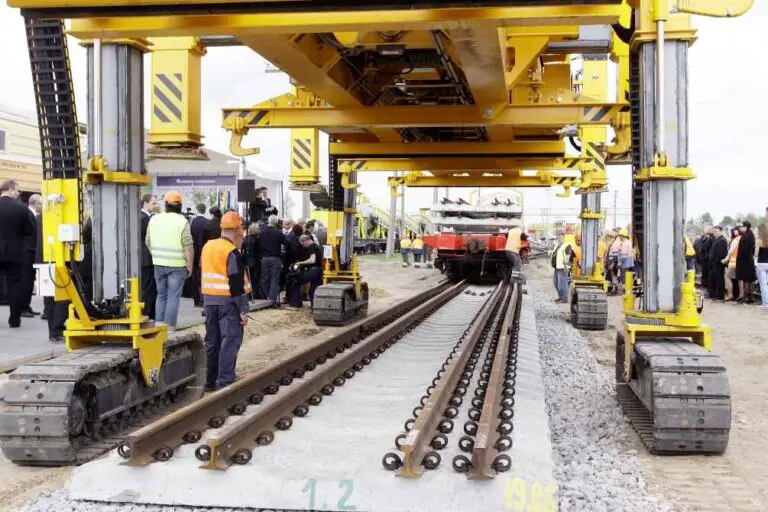7 Examples of Circular Economy Explained
Circular economy examples are; sustainable fashion, incentive recycling, regenerative construction, conservative transport, integrated manufacturing, environment-friendly production, and energy recycling.
In this article, examples of circular economy are discussed based on definite sectors and industries. It is a good approach because it simplifies the topic and shows how these aspects of the economy contribute to the transition from a linear to circular model.
1). Sustainable Fashion (as one of the Examples of Circular Economy)
The concept of sustainable fashion is based on principles of circular economy. Other terms used to describe sustainable fashion are circular fashion, and eco-fashion.
It is a model of fashion industry that seeks to control the entre lifecycle of products (from raw material extraction to used product) in such a way that establishes sustainability [6].
To achieve this, new and innovative methods are introduced to prolong the lifecycle of products and raw materials. Such methods include conservative design, swapping reselling, repair and recycling.
The goal here is to make products more valuable by making them reusable, while reducing the amount of waste produced by the fashion industry.
When fashion products like clothes, shoes and sports wear are made to be recyclable, their quality can be increased with less risk of financial loss to the producer.
This is because the high-quality products can then be recycled and circulated for a longer period of time.
Some fashion companies implement return and resell policy. This policy ensures that when a product has been used by the consumer, and has been outgrown, it can be returned to the producer. The consumer earns a discount based on the condition of the returned material, while the producer saves cost on raw materials, by refurbishing and reselling the product.
Examples of fashion brands that operate according to circular economic principles are; MUD Jeans and Stella McCartney.
2). Incentive Recycling
Incentive recycling is one of the most fundamental examples of circular economy. It can also be seen as a practical method of achieving sustainable development and economic resilience.
The idea behind incentive recycling is to encourage producers and consumers to recycle their used resources by attaching some form of benefit or reward, to this act [1].
Incentive recycling has the advantage of being simple and flexible to implement by both public and private entities.
There are various method by which it can be implemented. They include; subsidization, promotions and recycling programs, and the use of financial incentives.
A good example of incentive recycling from a financial perspective is the deposit refund scheme [10]. This scheme encourages consumers to return used products by attaching a financial benefit.
In the food production industry, it is used to recycle products like reusable bottles. The consumer purchases food products at an extra cost that is refunded on return of the bottle or packaging.
Companies in different sectors of the economy can implement incentive recycling. Programs can be established in which the consumer redeems points and wins prizes when they return used materials.
Another method of implementing incentive recycling is the ‘pay as you throw’ scheme [4]. For example, firms that manufacture biodegradable plastics can get raw materials by paying a fixed price per volume, for used bioplastics and biomass feedstock.
The same approach can be used by biorefinery operators to get raw materials for biofuel and bioenergy production; as well as by metal and electronics manufacturers.
Governments can use incentive recycling as a means of waste management, by implementing carbon tax reduction schemes for companies, and subsidies for consumers.
H&M Group is an example of brands involved in incentive recycling.
3). Regenerative Construction (as one of the Examples of Circular Economy)
Also known as ‘green construction’, the concept of regenerative construction is hinged on the idea of recycling and reusing materials in the construction industry.
It is also concerned with the introduction of new and innovative methods that ensure both energy conservation and energy efficiency in construction. Such methods will save labor, cost and time.
Construction materials that can be recycled include aggregate and rubble, metal, rubber and glass [8].
Buildings and structures that are no longer useful can be demolished, and the components recovered. Metals and glass can be refurbished and re-manufactured for reuse.
Concrete materials can be fed into a crusher which reduces them into smaller aggregates which can be used as base material when constructing flexible pavements [2]. Materials like porcelain can be recycled and used as insulation in buildings.
The overall aim is to prevent wastage of these materials. As a result, environmental degradation, greenhouse emissions and cost can be reduced.
Innovative methods like the use of artificial intelligence, can be implemented to save energy, raw materials, labor, time and cost. Building designs can also be optimized. The adoption of smart house technology is a step toward achieving sustainability [7].

4). Conservative Transport
The transport sector has an important role to play in the transition from a linear to a circular economy [9]. It is also an important sector with respect to meeting the sustainable development goals and the renewable energy transition.
This is because the transport sector is responsible for a significant number of jobs, economic projects as well as large-scale energy consumption.
Therefore, conservative transport is one of the holistic examples of circular economy, as it is capable of affecting a variety of interrelated sectors and processes.
The idea of conservative transport has to do with introducing methods, products and policies that will reduce wastage, and conserve energy, labor and time in the transport sector.
With respect to methods and products, the circular economic model of transport depends on a sustainable future that is driven by innovation. Such innovation aims to eliminate issues like air quality reduction, and transport-related environmental remediation, by creating sustainable, high-quality, safe and efficient products.
Proof of such efforts can be seen in the development of electric cars and hybrid cars, and the introduction of liquid hydrogen and hydrogen fuel cells into the automotive industry. These technologies are a deviation from traditional fossil fuel engines, and an attempt to improve on the performance of such traditional technologies.
An example of a circular economic policy that is used in the transport sector is ‘return-repair-reuse’ policy. It is defined by practices where the consumer is allowed to return automobile products for repair, optimization, software update, and subsequent reuse. Swapping and recycling policies are also used to prolong the lifecycle of automobile products.
5). Integrated Manufacturing (as one of the Examples of Circular Economy)
Integrated manufacturing is a practical example of circular economy, which can be applied in any industry.
The idea behind this approach, is to unify the operations in manufacturing, such that raw materials are recycled effectively and resources shared evenly. It aims to mimic the sustainability of a natural ecosystem such as forests and grasslands, where resources are continuously cycled among biotic and abiotic components of the system.
Based on the above description, we can refer to the integrated manufacturing approach as a symbiotic model that is based on interconnectivity [3].
This means that it seeks to establish conditions where all aspects of manufacturing, from raw material extraction to processing, product design, marketing and recycling, are all interlinked.
However, at the same time, integrated manufacturing seeks to avoid excessive interdependence, so that each aspect of manufacturing is an ecosystem of its own, while being a part of the larger industrial ecosystem. Only under such conditions can economic resilience be achieved.
In the process of creating products, manufacturers must collaborate with agents of the supply chain for raw materials and finished products, government agencies, local stakeholders and unions, research and development groups, as well as other manufacturers.
This will establish cooperation, and effective but healthy competition, while manufacturing products that are good for the economy, environment and society.
Humanitarian and socioeconomic problems like food insecurity, global warming, industrial stormwater pollution occupational hazards, poverty, inflation, unemployment and world hunger, can all be addressed by such an approach.
Effective competition will lead to optimization of product quality. Cooperation with stakeholders will help to establish and enforce policies to reduce waste and protect the environment.
Siemens is an example of brands involved in integrated manufacturing include.

6). Environment-friendly Production
Environment-friendly production has to do with the use of methods and the creation of products that have minimal impact on the environment.
A good example of this is sustainable farming, where methods like crop rotation, biodynamic farming, composting, integrated crop-livestock production, and contour farming, are used to create agricultural products, while protecting environmental resources through soil conservation and water conservation.
Others include the replacement of synthetic methods and materials of production, with organic ones.
7). Energy Recycling (as one of the Examples of Circular Economy)
All other examples of circular economy point to energy recycling in one way or another.
This is because there is no form of production that can be achieved without the use of energy.
In order to establish a circular economy, one of the recommendable measures is renewable energy development [5]. This is the effort to improve geothermal energy, solar energy, wave power and wind energy to a level at which they can replace fossil fuels.
While this is yet to be achieved, the last few decades have seen some advancement of renewable technologies like solar panels, biomass-driven cogeneration plants, nuclear breeder reactors and wind turbines.
Electricity generation has also seen improvement in terms of large-scale replacement of fossil fuel electricity with hydroelectricity and solar electricity; and in the optimization of power plant facilities. These measures all represent steps in the direction of a circular economy.
Recycling of products is equivalent to recycling of energy used in the manufacture of such products. This is also the case for waste management through reduction, and waste-to-energy conversion. Such measures ensure that energy is not lost or wasted.
Conclusion
Examples of circular economy are;
- Sustainable Fashion
- Incentive Recycling
- Regenerative Construction
- Conservative Transport
- Integrated Manufacturing
- Environment-friendly Production
- Energy Recycling
References
1). Abila, B.; Kantola, J. (2019). “The Perceived Role of Financial Incentives in Promoting Waste Recycling—Empirical Evidence from Finland.” Recycling 4(1):4. Available at: https://doi.org/10.3390/recycling4010004. (Accessed 15 August 2022).
2). Arshad, M.; Ahmed, M. F. (2017). “Potential use of reclaimed asphalt pavement and recycled concrete aggregate in base/subbase layers of flexible pavements.” Construction and Building Materials 151(2017):83-97. Available at: https://www.researchgate.net/publication/317738994_Potential_use_of_reclaimed_asphalt_pavement_and_recycled_concrete_aggregate_in_basesubbase_layers_of_flexible_pavements. (Accessed 15 August 2022).
3). Bjørnbet, M. M.; Skaar, C.; Fet, A. M.; Schulte, K. O. (2021). “Circular Economy in Manufacturing Companies: A Review of Case Study Literature.” Journal of Cleaner Production 294(4):126268. Available at: https://doi.org/10.1016/j.jclepro.2021.126268. (Accessed 15 August 2022).
4). Morlok, J.; Schoenberger, H.; Styles, D.; Galvez-Martos, J.; Zeschmar-Lahl, B. (2016). “The Impact of Pay-As-You-Throw Schemes in the Management of Municipal Solid Waste: The Case of the County of Aschaffenburg, Germany.” Available at: https://doi.org/10.20944/preprints201611.0025.v1. (Accessed 15 August 2022).
5). Pengian, H.; Wei, Q. (2020). “Circular Economy Development and Renewable Energy Law in China.” 2020 5th International Conference on Humanities Science and Society Development (ICHSSD 2020). Available at: https://doi.org/10.2991/assehr.k.200727.061. (Accessed 15 August 2022).
6). Radhakrishnan, S. (2022). “Circular Economy in Textiles and Fashion.” Available at: https://www.researchgate.net/publication/357700430_Circular_Economy_in_Textiles_and_Fashion. (Accessed 15 August 2022).
7). Salman, M.; Easterbrook, S.; Sabie, S.; Abate, J. (2016). “Sustainable and Smart: Rethinking What a Smart Home is.” ICT for Sustainability 2016. Available at: https://doi.org/10.2991/ict4s-16.2016.22. (Accessed 15 August 2022).
8). Tsiotas, D.; Kungolos, A.; Tsiota, A. (2010). “Construction Materials Recycling as means of Sustainable Construction.” Second International Symposium on Green Chemistry for Environment and Health; Mykonos, Greece. Available at: https://www.researchgate.net/publication/317953023_Construction_Materials_Recycling_as_means_of_Sustainable_Construction. (Accessed 15 August 2022).
9). Turoń, K.; Czech, P. (2017). “Circular Economy in the Transport Industry in Terms of Corporate Social Responsibility Concept.” Journal of Corporate Responsibility and Leadership 3(4):83-94. Available at: https://doi.org/10.12775/JCRL.2016.025. (Accessed 15 August 2022).
10). Walls, M. (2011). “Deposit-Refund Systems in Practice and Theory.” SSRN Electronic Journal. Available at: https://doi.org/10.2139/ssrn.1980142. (Accessed 15 August 2022).

